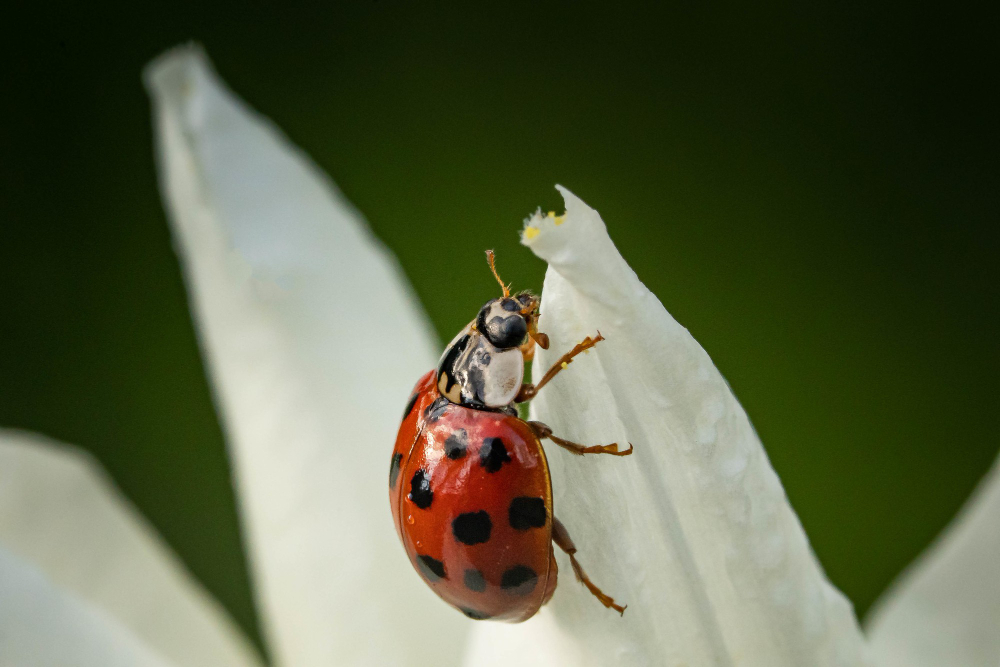
Dining Habits of Ladybugs: Exploring What Do Ladybugs Eat and Their Ecological Importance
In the enchanting world of insects, ladybugs stand out as charming and beneficial creatures. These delightful beetles, also known as ladybirds or lady beetles, capture our hearts with their vibrant colors and distinctive spots. But beyond their visual appeal lies a crucial role in maintaining ecological balance. Join us as we delve into the dining habits of ladybugs, exploring what they eat and their vital role in keeping pest populations in check.
Ladybugs’ Favorite Cuisine
Ladybugs are voracious predators, and their favorite meal is aphids. Aphids are small, sap-sucking insects that can wreak havoc on plants by draining their vital juices. Ladybugs are critical in controlling aphid populations, making them a natural and effective form of pest management in gardens and agricultural settings.
A Varied Diet
While aphids top the list of ladybugs’ preferred foods, these beetles aren’t limited to a single menu item. Ladybugs also feast on soft-bodied insects such as mites, scale insects, whiteflies, and even tiny caterpillars. This diverse diet ensures that ladybugs contribute to the overall health of various plant ecosystems.
A Balanced Diet
Not all ladybugs are exclusively carnivorous. Some species supplement their diet with plant pollen and nectar, especially when prey is scarce. This flexibility in diet showcases ladybugs’ adaptability and ability to make the most of available resources.
Building Strength for Adulthood
Ladybugs’ appetites for pest insects begin at a young age. Ladybug larvae, often called “aphid lions,” are just as eager predators as their adult counterparts. These larvae voraciously consume aphids, mites, and other soft-bodied insects, helping reduce pest populations even before they reach adulthood.
The Importance of Ladybugs
The role of ladybugs in maintaining ecological balance is immeasurable. By preying on pest insects, ladybugs prevent the unchecked proliferation of damaging species that could devastate crops and harm plants. This natural form of pest control helps reduce the need for chemical pesticides, promoting healthier ecosystems and sustainable agricultural practices.
Protecting Ladybugs
While ladybugs are essential contributors to the natural world, some populations face challenges. Pesticide use, habitat loss, and environmental changes can impact ladybug populations. Efforts to conserve and protect these beneficial insects are vital to ensuring their continued role in pest management and ecological balance.
Inviting Them In
Gardeners often encourage ladybugs to make themselves at home in their gardens. Creating habitats that provide shelter, water, and diverse plant life can attract ladybugs and support their populations. Some garden centers even sell ladybugs for release as a natural and eco-friendly pest control method.
A Symbol of Luck
Beyond their ecological importance, ladybugs have earned a place in cultural symbolism. In many cultures, ladybugs are considered symbols of luck and good fortune. Their vibrant colors and gentle demeanor make them welcome visitors in gardens, and their presence is often associated with favorable omens.
Nature’s Pest Controllers
Ladybugs embody the delicate balance of nature’s interconnected web. As charming as industrious, these beetles remind us of the intricate relationships that shape our ecosystems. From their appetite for aphids and mites to their symbolic role in cultural lore, ladybugs continue to captivate our hearts while fulfilling their vital duty as nature’s tiny but essential pest controllers.

